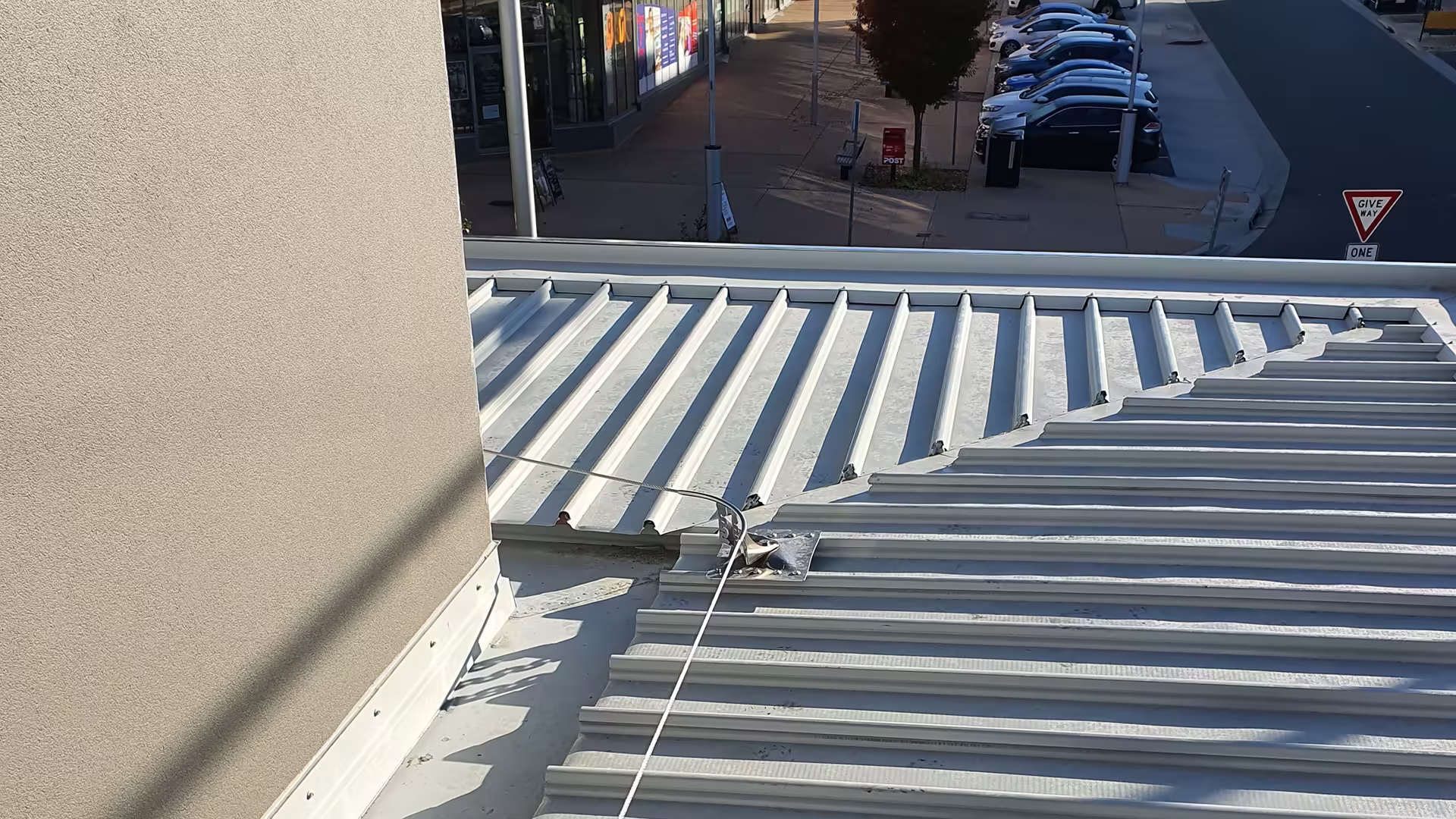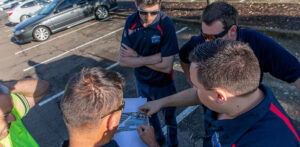Each type of height safety system is used to service a different type of risk. In this post we look at when you might use a static line system in your fall protection setup.
Like every other different method of providing fall protection for workers in high-risk environments, static lines are just another arrow in the quiver with advantages and disadvantages depending on each individual situation.
In this blog post, our team has assembled some of the more common use cases they have come across for static lines, compared to other types of fall protection system.
A quick overview of static line systems
In brief, a static line is a tensioned stainless-steel cable strung between two points. Depending on the length of the line, there may one or more intermediate points installed as well.
To use the static line, a worker dons a fall protection harness. They attach a lanyard with shock absorber to the harness at one end and connect the other end to a shuttle that is then placed on the static line itself.
The shuttle allows the work to travel along the line of the system, while remaining in constant connection to it, in a fall restraint situation.
(If you want to get into the details a bit more, we have a longer post about it you can get to by clicking here)
Static lines and solar panel systems
One of the most common uses of static lines in fall protection is to allow access to solar panels for maintenance, repairs and cleaning. Static lines can be run offset to the edges of a roof with solar panels installed. This can allow the work to access all areas of a solar array (depending on its design) while maintaining safety in the form of fall restraint.
To achieve the same level of access with roof anchors may require in the installation significantly more components compared to a static line. To keep a worker in fall restraint while transitioning between anchors, the spacing between them may be considerably shorter than what can be achieved with a static line.
Gutter cleaning
The ability of a static line to allow workers to move easily along the system without constantly needing to reattach to different anchor points also makes them a common choice when designing also provides advantages when designing safety systems for gutter cleaning.
With a static line workers can easily work their way along the edge of a building’s roof, accessing all the building’s gutters while remaining in fall restraint and protected from the risks of a fall.
The advantages offered here are much the same as those related to using a static line with solar panels, in that the worker only needs to connect once, not many times, as they move across the system and access different gutter areas for cleaning.
Raised garden beds and awnings
Along with the advantages of easier work positioning, when workers are accessing raised garden beds and gardens situated on roofs, statics lines offer an additional advantage.
Using a static line instead of anchor points reduces the risk of lengthy rope lines inadvertently damaging plants and shrubs planted in the garden. In many cases, garden beds located on roofs or balconies are built with a backing wall.
A side-mounted static line means that the safety equipment for the worker can be kept clear of the garden’s plants. This reduces the likelihood of accidental damage occurring to the plants in the garden because of rope lines being hauled through to connect to a series of anchorage points.
The same applies to awnings, where the static line can be located at the rear of the awning, removing the need to haul lengths of rope around to connect to anchor points and reducing the likelihood of the rope falling or getting in the way.
Tourist attractions
Perhaps one of the more unusual uses of static line safety systems is in tourist attractions.
In Sydney, the Sydney Harbour Bridge Climb uses a static line system as part of the fall protection for visitors. Although the walks themselves are protected by guardrail and platforms, the availability of a static line provides for additional protection, allowing those completing the climb to focus on enjoying the incredibly views.
Many treetops-style adventure parks also feature types of static line safety systems as part of their fall protection arrangements for visitors.
The starting point is understanding your risks
Before getting lost in the details about what type of fall protection system you may need, the risks that exist at your workplace need to be identified and assessed.
Height Safety Engineers have put together a height safety risk toolkit to help building owners, facility managers and others complete an initial identification and assessment of their site. It can be downloaded here.
To discuss your height safety or fall protection questions with our team, give HSE a call on 1300 884 978 or email enquiries@heightsafety.net. Height Safety Engineers are your partners in protecting people.





